Learning technologies and technology-enabled learning
Benefits of Learning /Education Technology
-
- Learning technology keeps hybrid classrooms connected. Remote learning, attending lessons virtually with video or audio communication to participate, requires using technology systems like Zoom, google classroom, LMS system, etc., to keep the classroom engaged.
-
- Learning tech systems & software allows learners to work more effectively. Variety of online courses and digital textbook libraries that learners have access to through LMS or google-classroom; learners can access their work virtually, turn in homework online, and learn at their speed (Self-directed learning), e.g., like YouTube, E-learning, Udemy, etc.
-
- Learning Tech helps teachers stay organize and create digital repositories of teaching materials, videos, and slide decks used, then provide access to students and caregivers to review on their own time (Asyn learning)
数码科技学习/教育的好处
(a) 学数码科技学习使混合教室保持联系。 远程学习,通过视频或音频通信参与虚拟上课,需要使用 Zoom、谷歌教室、LMS 系统等技术系统来保持课堂参与。
b. 数码科技学习系统和软件可以让学习者更有效地工作。 学习者可以通过 LMS 或 google-classroom 平台的各种在线课程和电子教科书库,学习者可以虚拟登入他们的工作,在线上交作业,并以自己的速度学习(自主学习),例如像 YouTube、E -学习,Udemy等
C。 数码科技学习帮助教师可以保持井井有条,并创建实用的教材、视频和幻灯片的数字存储库,然后让学生和看护人可以在自己的时间进行复习(异步学习)
This may involve computer-based learning or multimedia materials used to supplement in-class activities. Here are some examples of learning technology in the form of learning management systems, hardware products like video conferencing cameras for the classroom, and educational gaming platforms that show how technology can be infused in teaching and learning.
这可能涉及如何应用数码科技的学习与应用多媒体材料来互补与加强课堂的学习活动。 以下是学习管理系统LMS、教室视频会议摄像头等硬件产品以及数码教育游戏平台等形式的学习技术示例,展示了数码技术如何融入教学和学习的范围。
Company example:
- Chegg is a textbook marketplace allowing students to buy or rent physical or digital copies to save money. The site also has tutorials, online tutoring, and practice problems for students to work on.
- MART Board is a digital screen that functions as a whiteboard for students and teachers to write and demonstrate. Drawings can be recorded and copied for further use and study.
- Kahoot! is a quiz game that can be created by teachers and answered by students about any topic they want. Students answer questions together and win points for the more answers they get correct. It's a fun way to get students learning in a format they're interested in.
- Google Classroom lets Teachers organize assignments and create a collaborative online learning environment for students. It's an online tool where educators can create classes, distribute and grade assignments, provide feedback, and connect with students.
公司范例:
- Chegg 是一个教科书市场,允许学生购买或租用物理或数字副本以节省资金。 该站点还提供教程、在线辅导和练习题供学生处理。
- MART Board,一种数码字屏幕,可作为白板供学生和教师书写和演示。 可以记录和复制图纸以供进一步使用和研究。
- Kahoot! 是一个问答游戏,可以由教师创建并由学生回答他们想要的任何主题。 学生一起回答问题,答对得越多,得分越高。 这是让学生以他们感兴趣的形式学习的有趣方式。
- Google Classroom 让教师可以组织作业并为学生创建协作在线学习环境。 这是一个一体化的在线工具,教育工作者可以在其中创建课程、分发作业和给作业评分、提供反馈以及与学生联系。
To support remote and hybrid classes, the world of learning technology expands with many new languages, e.g.
1. Asynchronous Learning - includes lectures, classes, projects, or seminars that don’t happen in real time. Instead, lessons are pre-recorded with asynchronous classes or coursework, and students can consume educational materials on a self-paced schedule (e.g., from google-classroom or LMS). Asynchronous courses can also be used in a remote or hybrid learning model to supplement live discussions and activities. The learning technology used in an asynchronous learning environment may include:
- Learning management systems
- Google-classroom
- Self-paced modules
- Online practice quizzes
- Pre-recorded lessons, webinars, lectures, and conferences
- Online forums and discussion boards
为了支持远程和混合课程,学习技术的世界扩展了许多新语言,例如
1. 异步学习——包括非实时的讲座、课程、项目或研讨会。 相反,对于异步课程或课程作业,课程是预先录制的,学生可以按照自定进度的时间表(例如来自谷歌课堂或 LMS)使用教育材料。 异步课程也可用于远程或混合学习模型,以补充现场讨论和活动。 异步学习环境中使用的学习技术可能包括:
- 学习管理系统 LMS
- 谷歌教室
- 自定进度模块
- 在线练习测验
- 预先录制的课程、网络研讨会、讲座和会议
- 在线论坛和讨论区
2. Blended Learning - refers to a course of study that combines online, live, and/or in-person learning. The distinguisher between online education and blended learning is that blended learning must involve live discussions or lectures, whereas online learning can be completely asynchronous.
2. 混合式学习——指结合在线和现场和/或面对面学习的学习课程。 在线学习和混合学习的区别在于,混合学习必须涉及现场讨论或讲座,而在线学习可以是完全异步的。
3. Content Management System (CMS) - is a software that lets users create, publish, and share online content. A trainer can post assignments or reading material using a CMS as the backbone of their website.
3. 内容管理系统 (CMS) - 是一种允许用户创建、发布和共享在线内容的软件。 培训师可以使用 CMS 作为其网站的主干发布作业或阅读材料。
4. Distance Learning - refers to students who take courses without physically sitting in a classroom on campus where courses are being taught. Distance learning can take the form of hybrid learning, fully-online learning, or taking classes at a satellite campus.
5. Ed Tech - Education technology is a classification used to promote and access education. This can encompass hardware, software, and other related items that help students and teachers gain more from their classroom experiences.
6. Education ICT - using information and communication technologies (ICT) for educational purposes. Education ICT includes using cloud-based learning software, apps, blogs or discussion boards (Google Jamboard), digital whiteboards, and other interactive online tools for students and teachers.
7. Flipped Classroom - is an educational model that changes the traditional learning method by having students complete what would be considered "homework" in class with a teacher present. Instead of doing homework after school hours are over, students watch instructional videos or other pieces of content and activities and come to school to do actual work with their teachers.
Students can learn at their own pace and use their class time to have questions answered and get help with their work. A flipped classroom model is ideal for hybrid learning, where in-person class time is valuable for teacher-student connection and in-person collaboration.
8. Hybrid Learning - this is an educational model where some students join a class in person while others join remotely. Hybrid learning can combine synchronous learning with asynchronous learning elements like online forums, discussion boards, and digital content.
9. Instructional Technology - a field that creates classroom technology tools to assist instruction and learning. It covers the software and hardware, the internet, web-based applications, computer devices, online curriculum, and more to facilitate and enhance student learning in the classroom as quickly and dynamically as possible for teachers and students.
Example:
- Online learning platforms include, among others, Blackboard, Canvas, and Moodle. These platforms allow educators to create and deliver content, track student progress and communicate with students.
- Mobile learning apps can be used as a supplement to traditional instruction. For example, a teacher might use a mobile learning app to provide extra practice for students struggling with a particular concept. Like teaching a foreign language, give lessons that progressively introduce new vocabulary and grammar concepts. Finally, mobile learning apps can also be used to support flipped classrooms.
- E-books and e-textbooks can be used as instructional technology in several ways. They can supplement traditional textbooks, create interactive learning experiences, incorporate multimedia content and allow students to actively engage with the material.
- Learning management systems (LMS) are instructional technology tools designed to help educators manage and deliver content and courses. LMS platforms vary in features and capabilities, but most allow educators to create and deliver content, track student progress and assess student learning. (e.g., Canvas and Google classroom)
- Virtual classrooms are instructional technology that allows educators to teach and interact with their students online. These classrooms can be used for synchronous or asynchronous learning, which means they can be used for live, real-time instruction or for recorded education that can be accessed at any time. Virtual classrooms can be a great way to engage students in learning, as they can be used to create interactive and engaging lesson plans.
- Webinars and webcasts can be used as instructional technology in several ways. They can be used to provide information to learners in a variety of subjects, or they can be used to provide instruction on a particular topic. Additionally, webinars and webcasts can engage learners in discussion and debate or provide opportunities for learners to interact with each other.
- Online simulations can first be used to provide students with a virtual environment to learn and practice new skills. This can be especially beneficial for students who may not have access to the real-world equivalent of the task they are trying to learn. For example, students learning to operate a crane could use a crane simulator to get a feel for the controls and learn the basic movements required to operate the crane. Second, simulations can be used to create an immersive learning experience. This can be especially useful for complex topics or tasks that are difficult to understand without experiencing them first-hand. For example, students learning about the human body's inner workings could use a simulation to see how different organs and systems interact.
10. Learning Management System (LMS)
A learning management system is a software application that covers the administration, tracking, and delivery of educational courses or lectures to students. As students complete their work, the LMS moves them along in the process that is mapped out. It usually includes textbooks, related material, and online tests and quizzes, all packaged into one online portal.
11. Massive Online Open Courses (MOOCs)
A massive online open course is a course that is intended to have as many virtual participants as possible. It's a free ungated resource for anyone interested in a topic to join. MOOCs allow for a broader range of communication and virtual collaboration due to the sheer amount of users involved.
12. Online Program Management (OPM)
Online program management is an area of digital learning in which an outside company or resource builds out courses or educational products in advance for students to use. It's easier than having one teacher set up a whole online system and figure out how to program it all. Online course access can be purchased through the school or by students themselves. (e.g., Udemy)
15. Student Information System (SIS)
A student information system is a software system that tracks and analyzes student data. It keeps track of information like student test scores, attendance, and subjects they've taken. Student information systems can be used to see where students need more help or how to best assist them.
16. Synchronous Learning
Synchronous learning includes classes in which all students and teachers are online simultaneously. Unlike other online courses where students attend at their own pace, these have designated start times and are intended to mimic a regular physical classroom. Students participate in lectures and discussions in real time without waiting until later to respond. To support synchronous learning may include:
- Video conferencing as a whole class, in breakout rooms, or one-on-one
- Real-time webinars or lectures
- Virtual classrooms
- Instant messaging
- Live Q&A and student polling
17. Virtual Classroom
A virtual classroom is an online room where students attending a virtual class learn and ask questions. A virtual classroom lets everyone hear or see the others that are there and answer questions as they come up. It brings the benefits of a physical classroom online. Think of a virtual classroom as the object of fully remote learning. When engaging in fully remote learning, you are participating in a virtual classroom.
18. Webinar
A webinar is a presentation focused on a specific topic that is hosted and attended virtually. Attendees can sign up ahead of time and are taken to a digital lecture where slides, videos, or other multimedia will be presented. These are done with the help of video conferencing technology and software and can be either synchronous or asynchronous, depending on whether the webinar is live or pre-recorded.
19. Social Media and Digital Learning Tools - Websites and social media allow students to research and teachers to share lesson plans, digital resources, assessment data, and even whole-group, away-from-school communication (see The Flipped Classroom). Podcasts, multimedia such as music and YouTube videos, and other digital tools can also be accessed here.
Technology-enabled learning activities
Technology-Enabled Learning (TEL) describes using technology, platforms, systems, and digital content to extend and enhance learner-centered learning. The design of TEL environments starts with the consideration of pedagogical principles. The TEL website provides advice and frameworks for planning, designing, building, delivering, and reviewing subjects.
If you’re looking for ideas of exactly how to use technology in the classroom to enhance learning, some examples include:
1. Gamified Learning
Learning can and should be fun, and using technology for gamified learning in our virtue classroom can be advantageous to achieving the learning goal. Gamification creates an emotional connection between the content and students. It strongly influences the individuals' attention, which makes them more receptive to learning. Gamified learning can also be as simple as creating a virtual scavenger hunt by creating a list of questions for learners to search and find the correct answers and adding learners to pairs or groups to encourage collaboration and teamwork.
Strategies in Gamification for learning
There are a variety of gamification strategies that we can incorporate into our learning environment. The most popular ones are:
- Point systems
Assigning points for completing different tasks can encourage individuals to work hard. It also accurately represents their effort level to show how much they have progressed throughout the course or lesson.
- Badges
Badges are a fantastic way to acknowledge and reward people for their efforts. A badge is an award given as a virtual object or a pinned image on our profile. It is a fantastic way to show that we value the hard work and effort put into the task.
- Leaderboards
Leaderboards are great for creating competition among students, as they will want to see their name on top and work harder. We can create separate leaderboards based on different teams, dividing the individuals into smaller groups for better competition.
- Challenges
A challenge is a task that requires an individual to complete something using their time and effort, but it does not have any negative impact if failed or done incorrectly. Challenges can incorporate learning strategies such as problem-solving, where individuals need to think outside the box to develop a solution. E.g., Kahoot and Quizzes
Other gamification techniques or strategies could include the element of surprise to keep it exciting and allow users to "unlock" certain features or content in the game by completing a task.
Examples of Gamification In Learning
Gamification helps improve the learning experience in many ways; we’ll look at a few of the most practical ways we can gamify learning.
1. Digital Field Trips
An increasingly popular, useful, and cost-effective tool for teachers searching for new ways to use technology in the classroom is taking digital field trips. Google Street-view and other similar apps allow you to virtually explore parks, forests, and even national and international landmarks from the comfort of your classroom.
2. Integrate Social Media
Because students already spend so much of their time on social media, integrating its use into our classroom is among the most innovative ways to use technology by connecting students to curriculum, classroom resources, and one another. Create a Facebook group specifically for our class where we post discussion topics or develop unique classroom Twitter hashtags students can use to discuss lessons or ask questions!
3. Gather Student Feedback
The actual test of any classroom structure and/or curriculum is how well it helps students learn. Getting feedback from students is vital to assessing this, determining what is and isn’t working, and addressing problems and confusion as they arise. Use online surveys (like google Forms) and polls to perform daily or weekly check-ins with students to get their opinions on lessons and address lingering questions or concerns. Expand on the usage of Twitter hashtags by having students tweet their feedback and questions with a classroom hashtag.
4. Creating Digital Content
Creating digital content related to the things they are learning is an excellent way for students to display their creative talents and showcase learning. As with any other project, creating content is most effective when students can express themselves in ways that highlight and accommodate their strengths and learning/communication styles. Provide options for students to express themselves through blogs, Vblog (YouTube or TikTok), videos, podcasts, eBooks, flyers, and other digital art, or any other means they feel most comfortable with. Respecting each student’s individuality and need for creative expression helps them flourish as learners.
5. Using a Classroom Calendar
Develop a shared online calendar for our classroom through Google Calendar or a similar program like Google classroom for posting essential updates. Post assignment due dates and classroom events (such as field trips and guest speakers) in one easily-accessible location for both teachers and students. Go a step further and share the calendar with parents to keep them connected and engaged with their learner’s learning.
6. Video/Multimedia Lessons and Presentations
Bring presentations to life for students by incorporating visual effects, photos, videos, and music. Developing slideshows and digital presentations, playing music or a video for background and context while presenting, or inviting virtual guest speakers to engage with our class via programs designed for conference calls (such as Skype, Google Hangouts, and Facetime) are all fun and creative ways to boost engagement with lessons while teaching the benefits of technology and multimedia use.
7. Online Activities for learners who finish work early
Set up learning stations to encourage and support students working independently. If a student completes an assignment early, rather than being stuck waiting for other students to catch up or for class to end, students can extend and enhance their learning by visiting a learning station and watching videos, playing learning-based games, or exploring other online activities related to their education.
8. Mentimeter - Mentimeter is a cloud-hosted solution designed to help facilitators engage and interact with target learners in real time through polls. Mentimeter’s polling tool allows trainers to set questions for their target learners to answer via any device. Furthermore, professionals use the platform to improve their analysis by getting unbiased input and giving visually pleasing presentations. With it, we can mine valuable audience data to make future decisions better informed; data that we can present at meetings cleanly and attractively.
9. Google Forms - is a web-based app developed by Google which is used to create forms for data collection purposes. Data gathered using the form is typically stored in a spreadsheet. Although there are other online survey apps, It is an excellent free option.

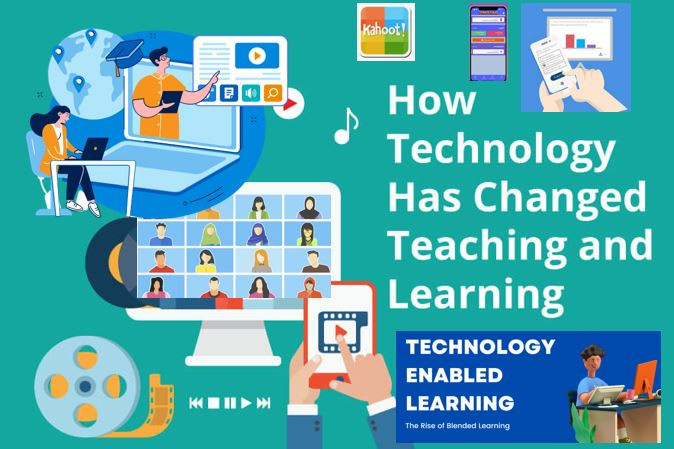
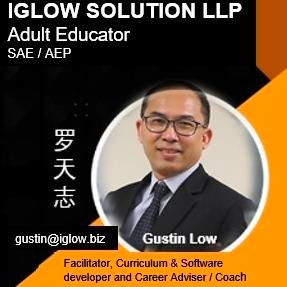



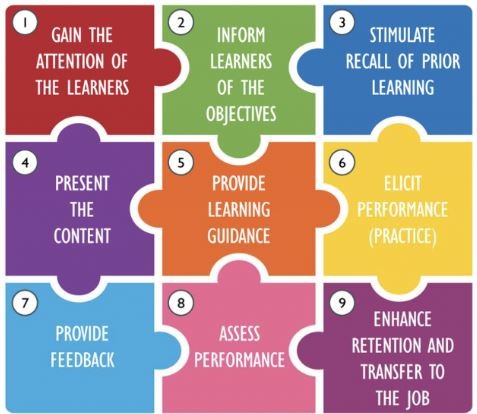

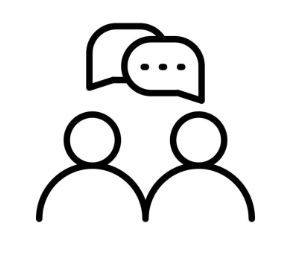

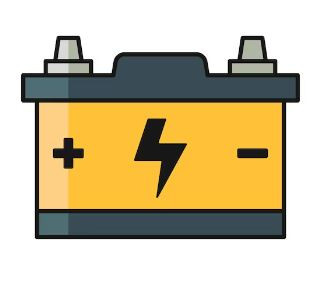

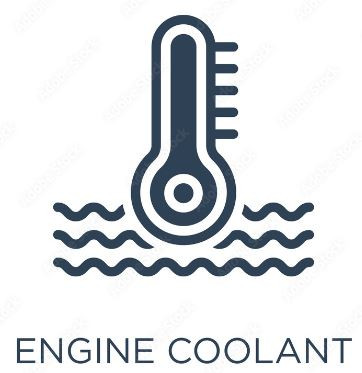
No Comments